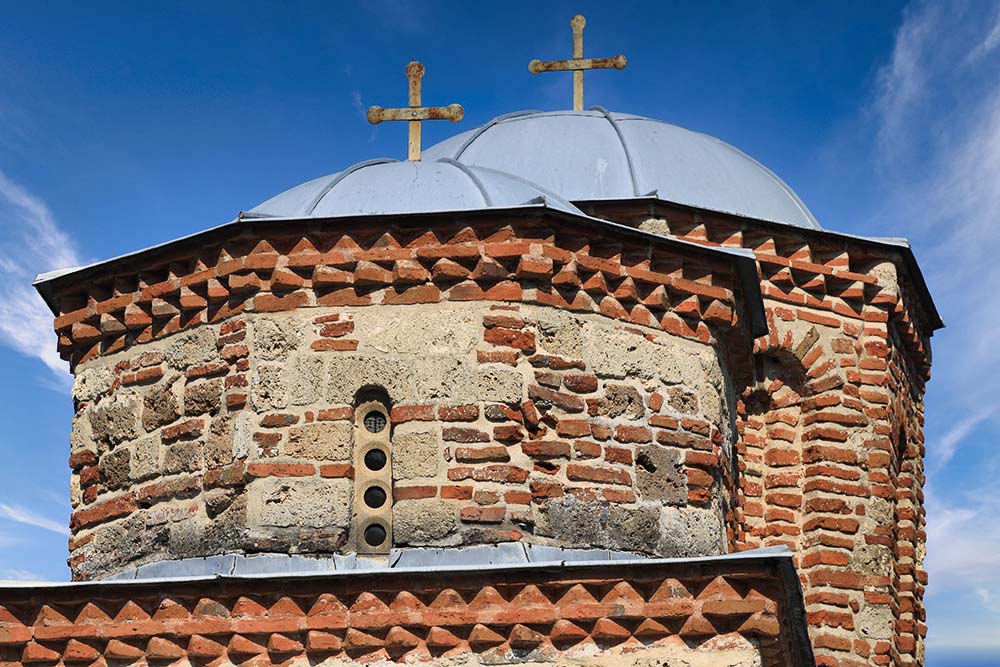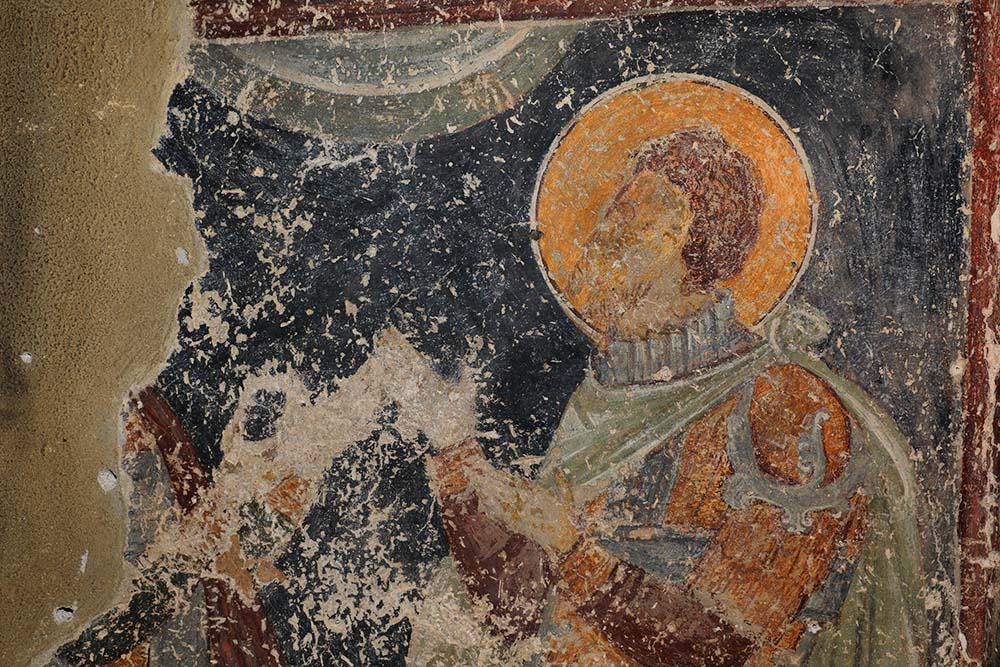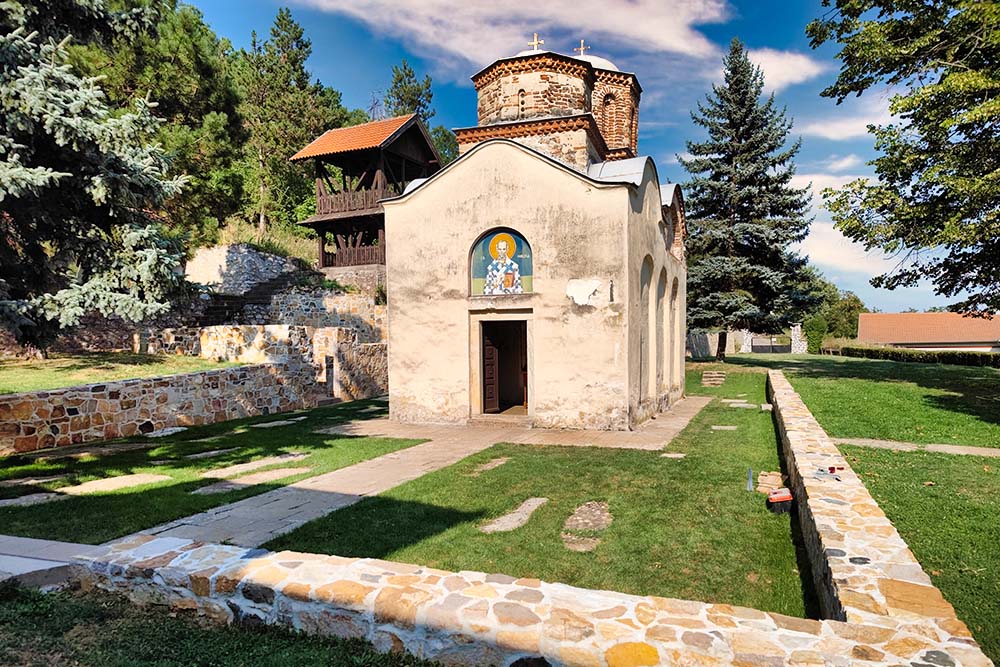The monastery of Jošanica is situated in the foothills of Crni Vrh mountain, some 10 km from the town of Jagodina in central Serbia. The exact date of construction, as well as the original dedication of the monastery katholikon are unknown. According to folk tradition, the monastery is associated with Prince Lazar and his reign. One of the legends relays how Prince Lazar went hunting and accidentally killed a hermit by the name of Joša, on whose grave he erected the monastery calling it by the hermit’s name. Also, it was believed that it was there that Prince Lazar married Princess Milica. Based on analyses of the architecture and painting, it is considered that the church was built in the second half or toward the end of the 14th century, while the fresco painting is dated at the turn of the 15th century or toward its middle. Some recent considerations of the fragments of rulers’ portraits brought forward propositions that the church was decorated during the time of George Branković.
Based on the preserved fragment of a figure of a holy warrior painted within the Founders’ composition, it is assumed that the katholikon of the monastery was dedicated to Saint George or Saint Demetrius, while presently it is placed under the patronage of Saint Nicholas. The church is an endowment of a noble family whose two members were most likely buried in the dual tomb discovered by the south wall of the narthex. The oldest written source on the church is the founder's inscription on a stone plaque from 1786 when the church was reconstructed for the first time. The monastery was a stronghold of Captain Koča Anđelković and the insurgents, thus following the fall of Kočina Krajina (Koča’s frontier- the territory liberated under his command), the monastery was burned down by the Turks in the act of retaliation. It was restored at the beginning of the 19th century, and in 1815, a historical meeting of Prince Miloš Obrenović and the Muhafiz of Belgrade Marashli Ali pasha was held there during which the peace treaty between the rebels and Turks was signed. The biggest repairs of the church were undertaken in 1856 and 1858 when the fresco painting was plastered and whitewashed. It was discovered in the mid-20th century, and pursuant to that, in 1968 and 1969 large conservation and restoration works were conducted on the church.
Katholikon of the monastery Jošanica was built as a single-aisled church with a dome supported by pilasters, a narthex that is also domed, and a semicircular apse to the east. Lateral facades are adorned with three narrow semicircular niches each and decorative brickwork, while above the western portal, a lunette is preserved. In recent times, a bust of Saint Nicholas was painted there in accordance with the current dedication of the church, whereas on the south facade, remains of the original painted decoration have been discovered that seem to have imitated the sculptural and architectural decorative forms of the period.
In the interior, scenes of the Liturgy of the archpriests and the Mother of God with Infant Christ and archangels are preserved in the sanctuary. In the niche of the prothesis, underneath the more recent layer of painting and the image of the Christ of the Eucharist, a depiction of the Dead Christ can be discerned. To the left, a proscomedia with partially preserved inscriptions can be seen, painted most likely, in the 19th century. In the nave, in addition to the figures of holy warriors and busts of martyrs, scenes from the cycles of Great feasts and Passion of Christ have been preserved. The evangelists are painted in the pendentives; busts of forefathers of Christ are painted in the drum of the dome, as well as twelve prophets between the windows, while above them, remnants of the Heavenly liturgy can be noticed. In the narthex, portraits believed to be those of Despot George Branković and members of his family can be seen, along with those of the members of the noble family who founded the church. There are also figures and busts of saints, as well as various scenes depicting monastic and eremitic life. Holy melodists are painted in the pendentives, and in the drum of the dome, evangelists and apostles are depicted, along with the prophets above them. Unlike the main dome, the narthex dome still preserves the painting in the cupola showing the Mother of God Orans with Infant Christ. In the painting of the narthex, as well as the other parts of the church of Jošanica monastery, several painters were involved.


